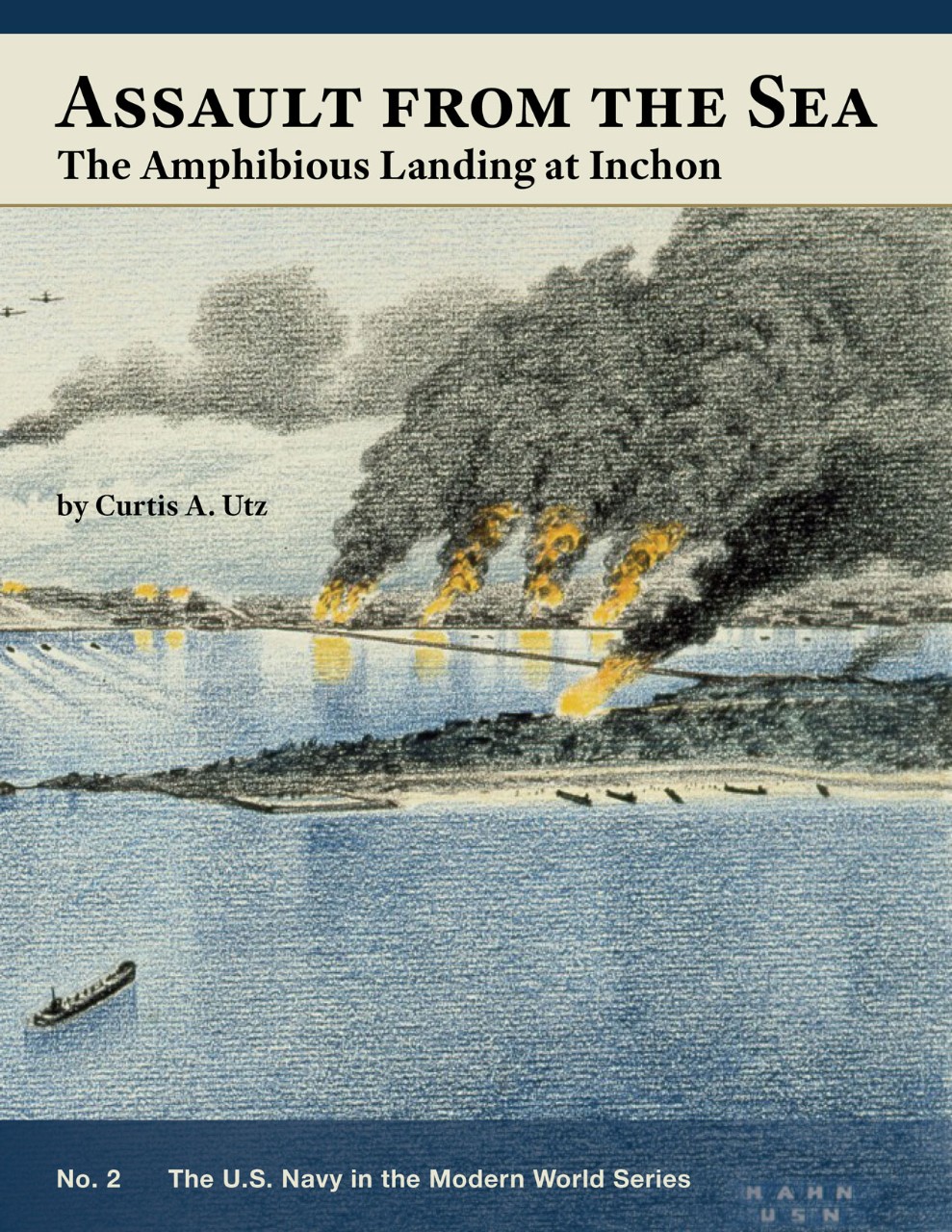Assault from the Sea: The Amphibious Landing at Inchon
Curtis A. Utz, 2020
ISBN 0-945274-27-0
Available free in the following format: 508-compliant PDF (7 MB)
The amphibious landing at Inchon (Operation Chromite) was the UN assault designed to force the North Korea People's Army (NKPA) to retreat from the Republic of (South) Korea. On 25 June 1950 the NKPA invaded South Korea, launching the first major armed conflict of the Cold War.
The Inchon invasion demonstrates how naval forces can be a decisive factor in littoral operations. On 13 September 1950, the naval forces in JTF 7 led by Admirals Struble and James H. Doyle, began their attack against Inchon. Carrier-based aircraft squadrons, destroyers, and cruisers battered North Korea's fortifications, coastal artillery batteries, and supply points for two days. On 15 September, 1st Marine Division assaulted three beaches and quickly seized Inchon. By 19 September, the Marines had captured Kimpo air base, into which flowed Marine close support aircraft and U.S. Air Force supply transports. U.S. Army troops advanced from the beachhead and linked up with their comrades advancing north from the Pusan perimeter. Marine, Army, and South Korean troops captured Seoul on 28 September 1950.
This is book no. 2 in the U.S. Navy in the Modern World Series.



